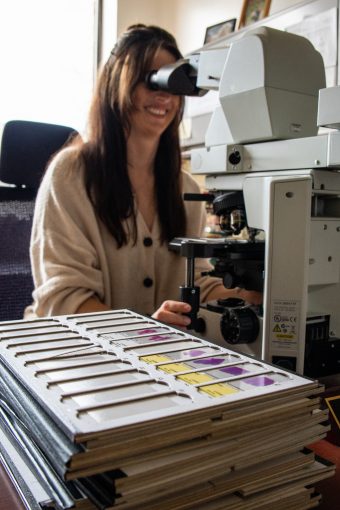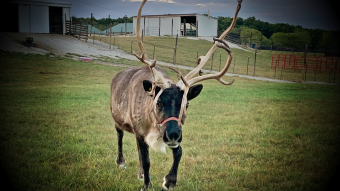
Oct. 30, 2024
Contact: Brian Consiglio, consigliob@missouri.edu
The cervid livestock business is one of the fastest-growing industries in rural America. In Missouri alone, more than 250 farms are dedicated to raising deer. To improve overall herd health and support the state’s economy, researchers at the University of Missouri are working to determine how best to manage white-tailed deer on these farms.
That is where the Mizzou College of Veterinary Medicine’s Veterinary Medical Diagnostic Laboratory (VMDL) comes into play.
A recent study led by Mizzou researchers and published in Journal of Veterinary Diagnostic Investigation found that infections are one of the biggest problems for white-tailed deer on Missouri farms. The findings can help farmers and veterinarians make better-informed decisions on antibiotic use and disease management practices.

“When deer are kept in captivity, they often spread pathogens at a higher rate than when they are in the wild,” said Amanda Smith, a clinical assistant professor in Mizzou’s College of Veterinary Medicine and the lead researcher on the study. “If deer farmers have a year where they notice a bunch of their deer are dying and they don’t know why, we at the VMDL can help them figure out what is going on through necropsies and advanced diagnostics for bacterial, viral and parasitic diseases.”
By discovering the three most common types of bacteria that caused pneumonia in the farmed white-tailed deer in the study, the information can help veterinarians and farmers know which types of antibiotics would be most effective for surviving members of the herd. The data can help ensure antibiotics are being used more judiciously as well.

“My ultimate goal is to give actionable data to both producers and vets so they can make proactive choices on targeting certain pathogens they can expect to find in their herds,” Smith said.
The VMDL is Missouri’s only lab accredited by the American Association of Veterinary Laboratory Diagnosticians and a Level 1 Lab of the National Animal Health Laboratory Network. Last year, the VMDL performed more than 207,000 lab tests, and the diagnostic service was utilized by veterinarians, owners and researchers from 110 Missouri counties and independent cities and 28 other states. These efforts have supported both animal health and the state’s economy.
“We are not just Mizzou’s diagnostic lab, we are also the state’s diagnostic lab — and we’re proud to provide services to stakeholders all over the state of Missouri,” Smith said. “The VMDL is a perfect example of Mizzou’s land-grant mission to help support farmers and their animals in rural areas.”
Other examples of the VMDL’s work include testing for chronic wasting disease in deer, African swine fever in pigs, bird flu in poultry and rabies in companion animals. In 2022, Mizzou broke ground on a $30 million expansion and renovation of the VMDL to help meet the statewide growing demand for its services.
“Causes of mortality in farmed white-tailed deer in the midwestern United States, 2004-2023” was recently published in Journal of Veterinary Diagnostic Investigation.



